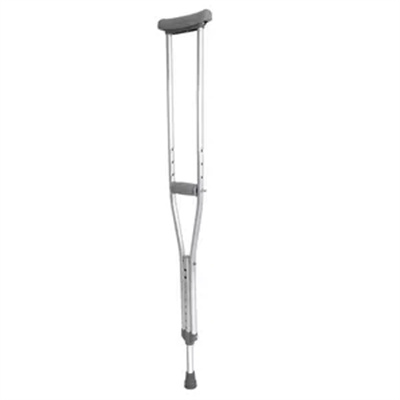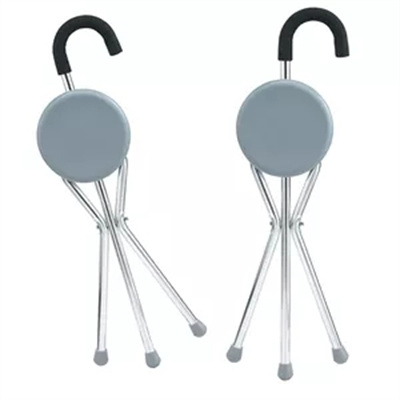Crutches are mobility aids that provide support and assistance to individuals with temporary or permanent mobility limitations. They come in various styles and designs, but they typically share several key features:
- Adjustable Height: Most crutches have adjustable height settings to accommodate individuals of different heights. Proper adjustment ensures that the user’s arms are slightly bent at the elbows when holding the hand grips, allowing for comfortable and efficient movement.
- Hand Grips: Crutches have hand grips at the upper end, which users hold onto for support. These grips are typically padded or cushioned for comfort. Some crutches also feature ergonomic or contoured grips to reduce pressure on the hands and wrists.
- Arm Support: Crutches have an upper arm support, often called the cuff or forearm platform, that allows the user to bear weight on their forearms. This design helps distribute the load and reduces pressure on the wrists and hands.
- Leg Support: The lower part of the crutch, called the leg support or the tip, makes contact with the ground. It typically has a non-slip rubber or plastic tip to provide stability and prevent slipping.
- Frame Material: Crutches are commonly made of lightweight materials like aluminum or steel. These materials provide durability while keeping the crutches relatively easy to maneuver.
- Underarm Padding: In the case of axillary crutches (underarm crutches), they often have padded underarm supports to provide cushioning and reduce discomfort when the user leans on them.
- Ferrules: The tips of crutches are called ferrules or crutch tips. They are typically replaceable and provide traction to prevent slipping on various surfaces. Non-slip rubber grips are commonly used for this purpose.
- Accessories: Crutches may come with various accessories or options, such as crutch bags, which provide storage for personal items, or attachments like ice tips for added traction in icy conditions.
- Forearm and Hand Straps: Some crutches may include straps or bands that secure the user’s forearm or hand to the crutch for added stability.
- Foldable or Collapsible: Some crutches are designed to be foldable or collapsible, making them more portable and easier to store when not in use. This feature is particularly useful for travelers.
- Weight Capacity: Crutches are usually designed to support a specific weight capacity. It’s important to choose crutches that can safely support the user’s weight.
- Single vs. Pair: Crutches are available as single crutches (usually used in pairs) or as a single crutch and a cane. Some users may only need one crutch if they have a partial weight-bearing restriction.
The choice of crutches and their specific features may depend on the individual’s mobility needs, medical condition, and personal preferences. Proper fitting and adjustment, as well as guidance from a healthcare professional or physical therapist, are essential to ensure that the crutches provide effective support and minimize discomfort during use.




















